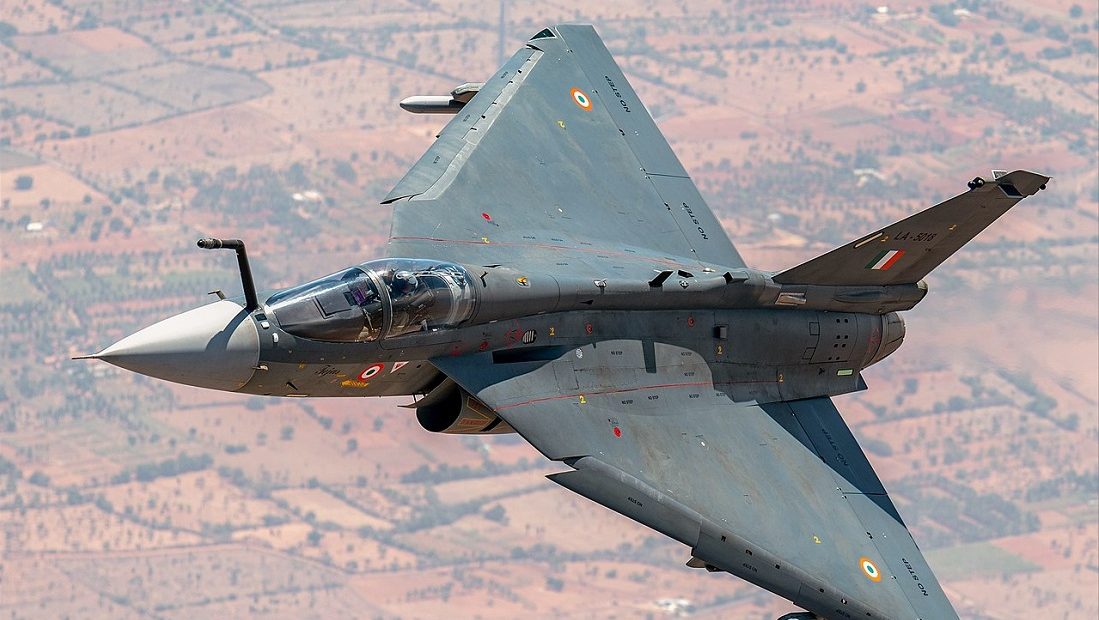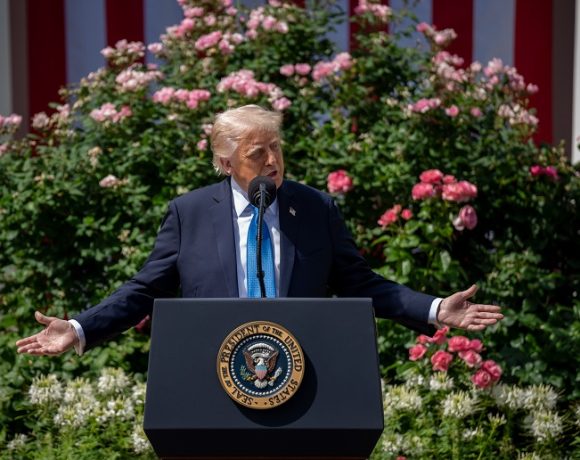
Tejas Mk 1A – A Milestone in India’s Quest for Self-Reliance
The recent approval of a ₹62,000 crore order for 97 Tejas Mk 1A fighter jets marks one of the most important milestones in India’s defense modernization journey. For decades, India’s reliance on imported fighters — from the MiG-21s of the Soviet era to the modern Rafales from France — highlighted a persistent gap in indigenous capability. The Tejas Mk 1A is changing that narrative. It is not just another addition to the Indian Air Force’s fleet, but a symbol of India’s determination to join the league of nations that design, produce, and sustain their own combat aircraft.
A Leap Beyond Mk 1
The Mk 1A is more than an upgrade; it is a transformation. The earlier Mk 1 variant, though revolutionary as India’s first indigenous fighter, came with limitations: a mechanically scanned radar, modest electronic warfare systems, and relatively high maintenance requirements. The Mk 1A fixes these concerns with a package of enhancements that elevate it into the modern 4.5-generation category.
At its core lies the AESA radar — either the indigenous Uttam or the Israeli EL/M-2052 — which offers superior range, multiple target tracking, and resistance to jamming compared to older systems. The electronic warfare suite has been overhauled, providing the jet with better survivability in contested environments. Weight reductions of nearly 300–400 kilograms improve performance and agility. The cockpit has been redesigned for pilot comfort and faster information processing, while maintenance-friendly modular components reduce turnaround times between sorties. For pilots, the Tejas Mk 1A promises not just better combat capability but also smoother flying and greater reliability.
A Boost for Atmanirbhar Bharat
Beyond combat specifications, the Tejas program stands as a flagship for India’s Atmanirbhar Bharat vision. Around 65% of the Mk 1A’s components are sourced domestically, from radar assemblies to composite materials. This not only strengthens HAL and DRDO but also sustains an ecosystem of more than 400 Indian MSMEs supplying parts, subsystems, and technologies. Each Tejas produced represents thousands of skilled jobs, technological knowledge, and industrial experience that feed into India’s broader aerospace future.
It is not just about one aircraft. The infrastructure, tooling, and know-how being created around Tejas are laying the groundwork for bigger projects — the Tejas Mk 2, the Advanced Medium Combat Aircraft (AMCA), and the Twin Engine Deck Based Fighter (TEDBF) for the Navy. These platforms will directly benefit from the industrial muscle and experience gained through the Mk 1A program.
Strategic Significance for the IAF
For the Indian Air Force, the Mk 1A arrives at a time when its squadron strength is under pressure. With MiG-21s nearing the end of their operational lives, India faces a squadron strength of around 30–32 compared to the sanctioned 42. The Tejas Mk 1A offers a lifeline. As a light fighter with modern avionics and weapons, it is ideal for air defense, interception, and precision strikes within a 500–600 km combat radius. While heavier fighters like the Su-30MKI or Rafale will continue to perform long-range strike roles, the Tejas Mk 1A fills a critical role as a nimble, cost-effective, and readily deployable frontline fighter.
The aircraft will be integrated with Astra Mk 1 and Mk 2 beyond-visual-range missiles, giving it teeth in air-to-air combat. In the future, BrahMos-NG integration could provide an unprecedented strike option for a light fighter. These capabilities make the Mk 1A more than just a replacement for the MiG-21; it turns it into a versatile force multiplier.
The Challenges Ahead
Of course, challenges remain. The most pressing has been the dependency on GE’s F404 engines, which delayed production by nearly two years. Supply bottlenecks meant HAL had several airframes ready but waiting for powerplants. Deliveries have now restarted, with GE promising a steady supply of two engines per month from late FY 2025–26. If this schedule holds, HAL will be able to ramp up production to 16–24 jets per year — enough to supply one full squadron annually.
Another challenge is proving HAL’s consistency. Historically, HAL has faced criticism for delays in production schedules and after-sales support. The Mk 1A contract is a test not only of the aircraft but of HAL’s capacity to deliver on time. The credibility of India’s defense manufacturing push will depend heavily on how smoothly HAL can scale deliveries and meet IAF expectations.
The Export Opportunity
The Tejas Mk 1A’s significance does not stop at India’s borders. Globally, there is a market for affordable, capable light fighters. Nations in Asia, Africa, and Latin America often cannot afford high-end jets like the F-16 Block 70 or Gripen E. The JF-17, Pakistan’s joint venture with China, has filled that space — but the Mk 1A offers a superior alternative in radar, weapons, and build quality.
Tejas Mk 1A vs JF-17 Block III
Radar: Tejas Mk 1A with AESA (Uttam/ELM-2052) is competitive with JF-17’s KLJ-7A AESA, but has higher reliability and integration with Indian/Astra missiles.
Weapons: JF-17 Block III fields the long-range PL-15 (150–200 km), while Tejas is catching up with Astra Mk 2 (160 km). Tejas holds an edge with future BrahMos-NG integration.
Build Quality: Tejas has more composites and better safety record, while JF-17 struggles with engine reliability and accident history.
Export Appeal: JF-17 sells on cost; Tejas sells on capability and reliability.
Tejas Mk 1A vs Gripen C/D
Cost: Tejas is cheaper (~$70–75 million vs Gripen’s $85–100 million).
Avionics: Both carry AESA radar and modern EW suites; Gripen has the advantage of decades of export support.
Weapons: Gripen integrates Meteor missiles (top-class BVR). Tejas is not there yet, but Astra Mk 2 narrows the gap.
Industrial Ecosystem: Gripen’s export history is strong, but Tejas is building a similar supply chain base in India.
By positioning itself between the bare-bones affordability of the JF-17 and the higher-end sophistication of the Gripen, the Tejas Mk 1A occupies a unique space in the global market. It offers more reliability and modernity than the Chinese-Pakistani fighter, while remaining more cost-effective than Sweden’s Gripen.
Tejas Mk 1A in the IAF Roadmap to 2030
The Mk 1A is not just a stopgap — it is part of a carefully sequenced modernization roadmap. By 2030, the IAF envisions a layered fleet:
Tejas Mk 1A: 180+ jets forming at least six squadrons, replacing MiG-21s and taking on light fighter duties.
Rafale and Su-30MKI: Heavy multirole and air dominance fighters providing long-range punch.
Tejas Mk 2 (Medium Weight Fighter): Scheduled for induction later this decade, filling the Mirage-2000 and MiG-29 replacement role with greater payload and range.
AMCA (Advanced Medium Combat Aircraft): India’s stealth fighter, expected in the early 2030s, for high-end strike and air superiority roles.
TEDBF (Navy): A naval variant ensuring India’s carriers have indigenous options beyond the MiG-29K.
Within this layered structure, the Mk 1A is essential. It gives India the breathing room to phase out legacy platforms without a steep drop in squadron strength. It also ensures that while the IAF waits for the Mk 2 and AMCA, it has a credible indigenous fighter in significant numbers.
Financial and Industrial Impact
The Mk 1A deal is not just a military investment — it is an industrial catalyst. At ₹62,000 crore, this order is one of the largest defense contracts placed with an Indian company. HAL’s stock surged after the announcement, reflecting investor confidence in its ability to deliver. More importantly, the program sustains and expands an ecosystem of suppliers — from composite material manufacturers in Bengaluru to avionics firms in Hyderabad.
Thousands of high-skilled jobs are being created directly at HAL’s assembly lines in Bengaluru and Nashik. Indirectly, tens of thousands of jobs across MSMEs are tied to Tejas production. The spillover extends into academic and research institutions, where joint projects with DRDO push advancements in materials science, sensors, and systems engineering.
Financially, each delivery milestone feeds into India’s GDP through manufacturing output and tax flows. Strategically, every rupee spent stays within the domestic economy rather than flowing abroad. This distinguishes Tejas from past purchases like MiG-29s or Mirages, where billions left India without strengthening local industry.
Geopolitical Implications
The Tejas Mk 1A is also a geopolitical statement. In South Asia, it directly challenges Pakistan’s reliance on Chinese fighters. While Pakistan inducts JF-17 Block III and imports J-10C from China, India is signaling that it can field indigenous solutions that match or exceed these platforms in capability. The Mk 1A, integrated with Astra and eventually BrahMos-NG, gives the IAF a qualitative edge in regional air combat scenarios.
In the broader Indo-Pacific, Tejas strengthens India’s position as a defense partner. As countries in Southeast Asia look to diversify away from Chinese and Western suppliers, India can present Tejas as an affordable, reliable option. This adds a new layer to India’s strategic diplomacy — offering indigenous defense products to partners as part of security cooperation.
At the global level, Tejas positions India not just as a buyer of Western systems but as an emerging exporter. Its success will influence how India is viewed in defense-industrial partnerships, including co-development programs with the US, France, and Russia. By fielding its own modern jet, India gains leverage in negotiations and enhances its credibility as a rising aerospace power.
More Than a Stopgap
Critics sometimes dismiss the Mk 1A as a stopgap before the arrival of the Mk 2 and AMCA. In reality, it is a bridge worth celebrating. It offers the IAF immediate numbers, boosts the domestic aerospace ecosystem, and establishes India’s credibility in defense production. Every Mk 1A inducted reduces dependence on imports and builds confidence for future projects.
In a decade, historians may look back at the Tejas Mk 1A not as an end but as a beginning — the aircraft that proved India could build and deploy modern fighters at scale. It symbolizes ambition maturing into delivery. The dream of an indigenous fighter is no longer aspirational. With the Mk 1A, it is operational, visible on runways, and ready for combat.


















